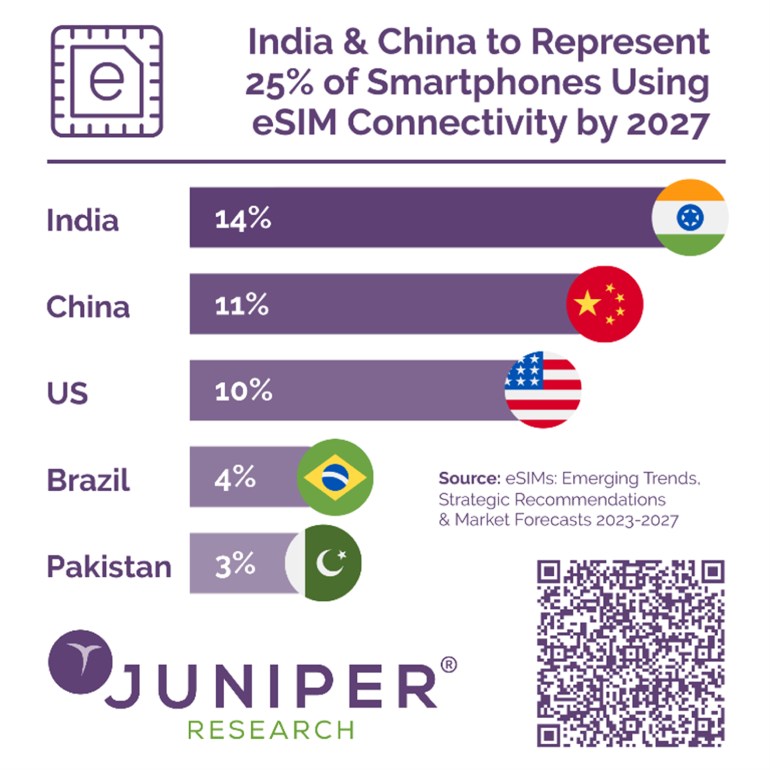 Juniper Research’s new report offers the most comprehensive analysis of the eSIMs (embedded SIMs) market available today. It reveals that the value of the global eSIM market will increase from $4.7 billion in 2023 to $16.3 billion by 2027, which is an impressive growth of 249%.
Juniper Research’s new report offers the most comprehensive analysis of the eSIMs (embedded SIMs) market available today. It reveals that the value of the global eSIM market will increase from $4.7 billion in 2023 to $16.3 billion by 2027, which is an impressive growth of 249%.
The market will be driven by the adoption of eSIM-enabled consumer devices, as seen in Apple’s recent release of the eSIM-only iPhone 14, triggering accelerated operator support.
eSIMs are embedded within devices; enabling devices and sensors to seamlessly switch between network operator profiles.
eSIM-enabled Android devices to accelerate consumer adoption
The research predicts that Apple will expand deployment of eSIM-only devices to Europe during 2023, with eSIM technology key to minimizing the time-consuming establishment of roaming agreements within the fragmented European telecommunications market.
It found that the total number of smartphones leveraging eSIM connectivity will increase from 986 million in 2023, to 3.5 billion by 2027, with manufacturers such as Google and Samsung developing an equivalent eSIM-only Android device in order to compete with Apple and maintain their global market positioning.
Research author Scarlett Woodford remarked: “Despite operator concerns regarding the disruptive impact of eSIMs on existing business models, growing support from smartphone manufacturers will place additional pressure on operators. In response, service providers must support eSIM connectivity to avoid subscriber attrition as technology awareness increases.”
Chinese regulations must support eSIM smartphone connectivity
The report found that the total number of eSIM-connected smartphones in China will increase from 103 million in 2023, to 385 million by 2027, assuming country-specific standards are implemented; allowing eSIM use in smartphones.
It also noted that current regulations prevent Chinese-based device manufacturers from selling to their home market, limiting investment and innovation. In response, the report urges industry bodies to work closely with the Chinese government to develop specifications that allow eSIM support whilst addressing requirements for device monitoring and tracking.
To find out more, see the new report: eSIMs: Emerging Trends, Strategic Recommendations & Market Forecasts 2023–2027.
Download the free whitepaper: Top Three eSIM Trends in 2023.
Source: Juniper Research


